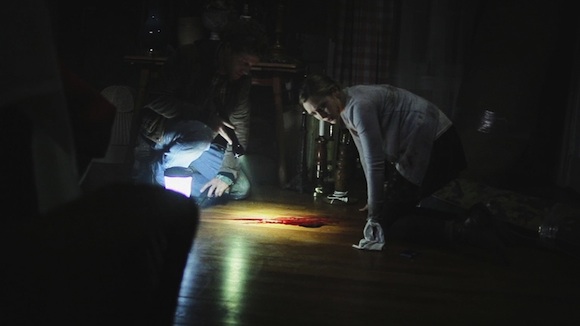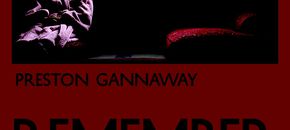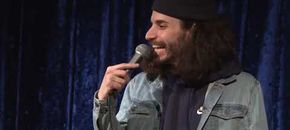Movie Review: Silent House
Last January, Elizabeth Olsen, younger sister to Mary-Kate and Ashley (a.k.a., the Olsen Twins), appeared in two Sundance Film Festival premieres, Sean Durkin’s Martha Marcy May Marlene and Chris Kentis and Laura Lau’s Silent House, a loose remake of a Uruguayan film, La Casa Muda.
Only now receiving a theatrical release, due, in part to additional editing, reshoots, including the ending, and new sound mixing, Silent House was shot to simulate a single, continuous take. It’s an audacious idea with little precedence in American mainstream film with the notable exception of Alfred Hitchcock’s Rope.
Silent House opens with an expansive overhead shot of a young woman, later identified as Sarah (Olsen), sitting pensively on a rock a stepping stone, in the middle of a lake. As Sarah stands and begins to walk the, camera slides down, following her as she enters the house of the title, a dilapidated, boarded-up vacation home her father, John (Adam Trese), hopes to sell once he, his brother, Peter (Eric Sheffer Stevens), and Sarah complete the necessary repairs. Another young woman, Sophia (Julia Taylor Ross), stops by the house, claiming they were childhood friends. Sarah doesn’t remember her, blaming gaps in her memory. That line alone is more than enough to suggest a suppressed or long-forgotten past, repressed emotions, and traumatic childhood experiences will play a part, possibly a significant one, in the all-important third act and denouement.
When conflict and hostility break out between John and Peter, the latter leaves abruptly, leaving Sarah and John alone in the house. Sarah hears or thinks she hears a noise upstairs. Suspecting squatters, John investigates, but when someone or something injures John, Sarah’s left to fend for herself against a possible home invasion by natural or supernatural squatters. As Sarah becomes increasingly distraught and disturbed, the camera never leaves her side, serving as both observer and participant. The camera stalks Sarah from room to room, from floor to floor, even when, briefly, she ventures outside, becoming a suffocating, claustrophobic presence, insistently, even voyeuristically focused on Sarah’s face and her reactions to a rapidly escalating nightmare.
Kentis and Lau smartly dispense with the question every haunted house/ghost story implicitly asks early on, but few answer: Why doesn’t Sarah leave? Simple answer: She can’t. Her father and uncle boarded up every window and padlocked every door in the house. The front door can’t be opened without a key (it disappears, course), adding to Sarah’s growing sense of claustrophobia and paranoia. Someone or something really is out to get Sarah, but the question is who or what. Kentis and Lau only answer that question in the final few moments. For some, perhaps many, moviegoers, the answer may seem like an egregious bait-and-switch, but that’s through no fault of Kentis or Lau’s. Horror fans won’t (and shouldn’t) find the answer surprising; they might even find it predictable, but they’ll have a difficult time arguing it doesn’t serve a narrative purpose (it does).
If nothing else, Kentis and Lau chose well when they decided to cast Olsen as Sarah. A lesser actor wouldn’t be able to handle Sarah’s transformation from despondent, moody twenty-something to sustained, abject terror. Even one false or unconvincing note would break the carefully choreographed spell created by the premise and the shooting style. Luckily, Olsen proves to be more than up for the demanding task, making Silent House a genre rarity: a horror film that doesn’t depend on period jump scares or bloody gore to leave moviegoers shaken and maybe even stirred.
Showtimes and Tickets






